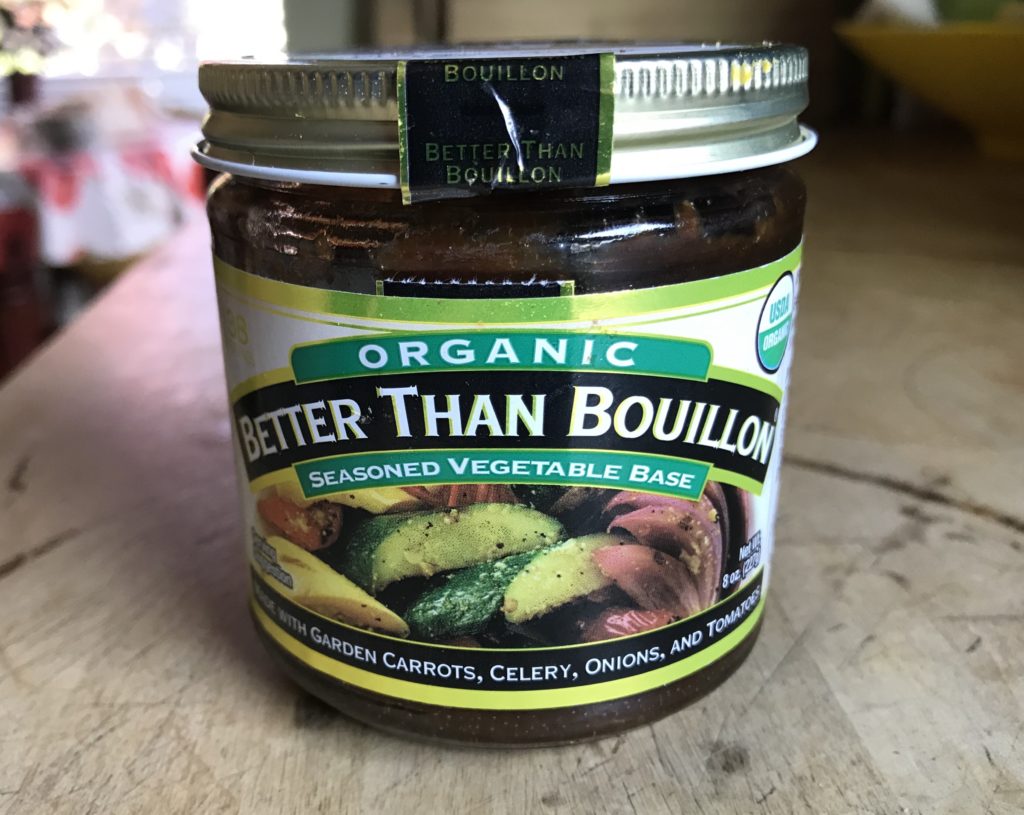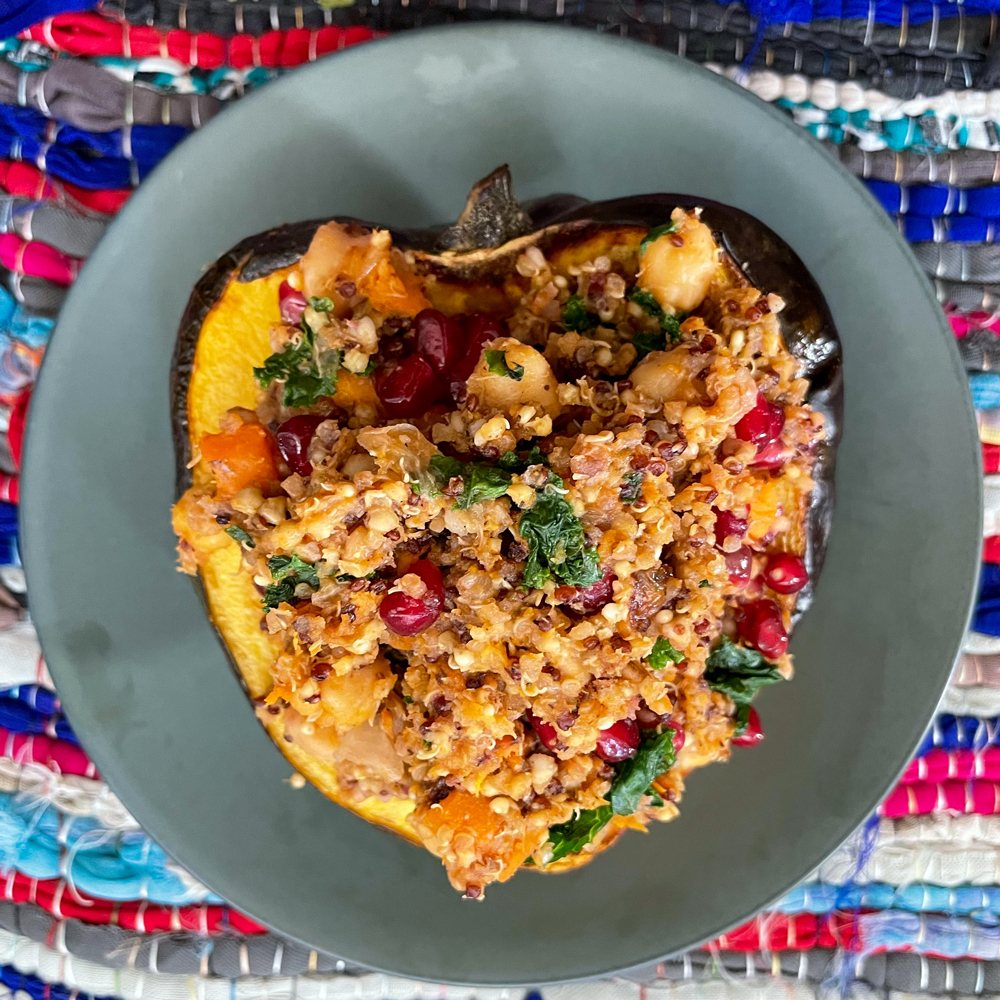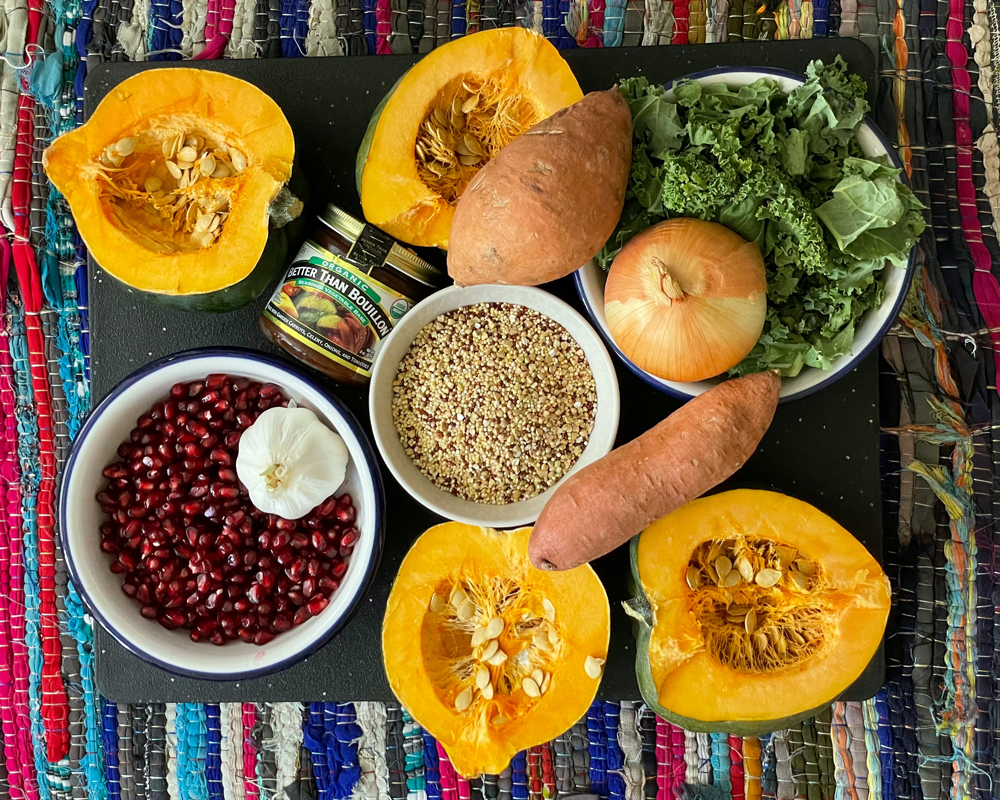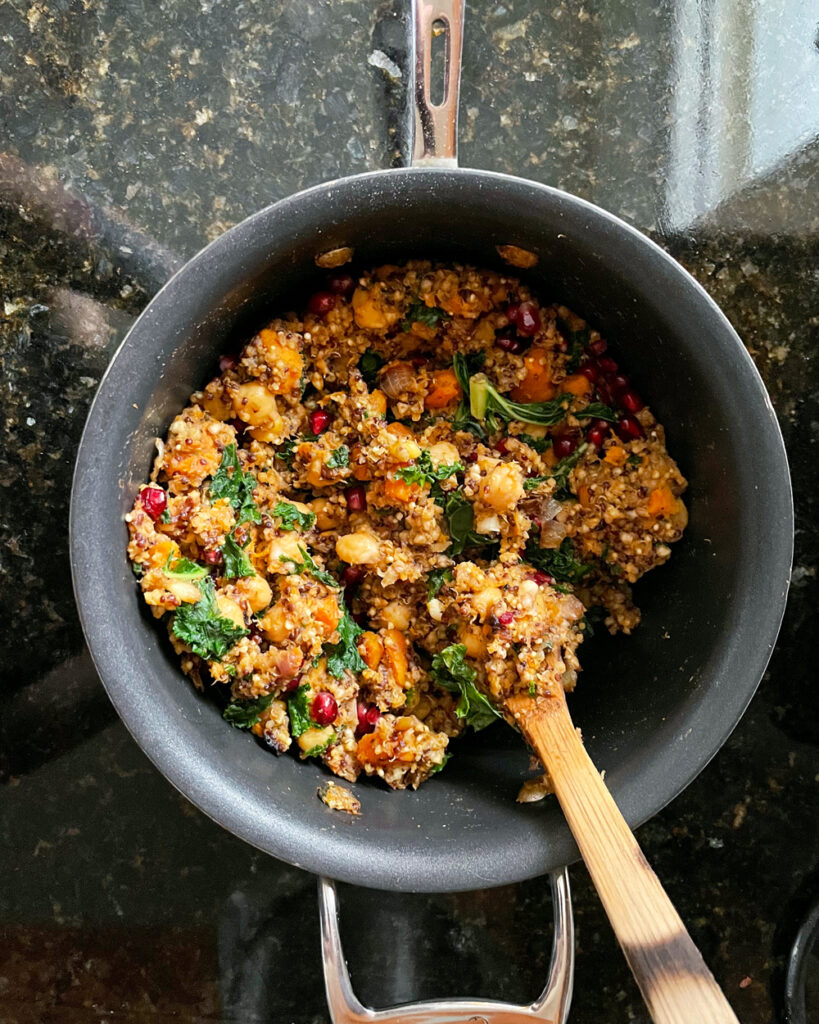Stuffed Acorn Squash
Now that winter is here, so is an abundance of sweet acorn squash. Of all of the winter harvest that’s available, acorn squash is probably my favorite winter vegetable–aside from sweet potatoes, of course (more on that very soon). Since the holidays are in full swing, I whipped up some nutritious stuffed acorn squash that is delightful and colorful–making you feel glowing from the inside out.
Because it’s easy to divvy up this recipe–one stuffed acorn squash half per person–it’s perfect as the main course for dinner parties. It might also be one of the most beautiful dishes I’ve ever shared. Set against the marigold acorn squash, the vibrant orange sweet potatoes contrast with the verdant green kale, as the red, jewel-like pomegranate arils peek through, like little rubies throughout the stuffing.
For the stuffing part, I opted for fair-trade quinoa, a mild-tasting grain that’s packed with protein. Among the veggies are shredded kale and–you guessed it–sweet potatoes. The pomegranate arils offer bursts of sweet against the savory. Chickpeas add more protein, making the stuffed acorn squash a complete meal.

The broth that I use here is Better Than Bouillon’s seasoned vegetable base*. A small amount of this paste goes a really long way. You only need to use about one teaspoon to make one cup of vegetable broth. It’s also quite versatile; you can use it in stuffing, soups, mashed potatoes, or anywhere it calls. If you want it to taste stronger, you can add more paste to the water. If you prefer lower sodium, you can dilute it with more water.
I could use the broth in the cartons, but I never need that much at a time. Also, broth from a carton eventually goes bad. With this Better Than Boullion’s broth base, I just use what I need and store the rest in the fridge for another recipe. I have used this broth for many years, and nothing is more convenient or easier to use than this good stuff.
Stuffed Acorn Squash Recipe

Sure, the rich colors and flavors of the stuffed acorn squash win the hearts of vegans and omnivores alike. But the real beauty of this dish is that, except for the quinoa and broth ratio, you can adjust exactly how much of each ingredient to put in the stuffing. The measurements here are more like guidelines. Would you rather have more kale than sweet potato? Be my guest. You don’t like chickpeas or would rather substitute with black beans? Make yourself happy. Season to taste, make mistakes. Lean into your intuition, and learn to trust yourself in the kitchen and in life. (Just remember to keep the water to quinoa ratio so it cooks right!)
You’ll most likely have some stuffing left over. And that’s quite okay. It makes a great lunch, and pairs well with soup, salad, or roasted vegetables.



You will need
- 2 acorn squashes, roasted
- 1 cup quinoa
- 2 cups broth: 2 teaspoons of Better Than Bouillon’s seasoned vegetable base with 2 cups of water
- 1/2 yellow onion
- 1/4 teaspoon salt
- 1/4 teaspoon black pepper
- 4 cloves of garlic, minced
- 1 tablespoon of oil
- 2 small sweet potatoes, cut into half-inch cubes
- 1 can of chickpeas
- 3 cups of kale
- Arils of 1/2 of a pomegranate
- Optional: pumpkin and sunflower seeds for garnish
- Preheat the oven to 425 degrees. Cut the 2 acorn squashes in half, and scoop the seeds and guts out. Brush the insides with olive oil. Put it in a baking dish, the insides facing up, with 1 inch of water in the dish. Roast in the oven for 45 minutes.
- Meanwhile, mix together the seasoned vegetable base with the water to make vegetable broth. Put the broth and the quinoa in a rice cooker and cook.
- As the quinoa cooks, set the heat to medium. Heat up a tablespoon of oil in a four-quart pot (or other large pot). Dice up the yellow onion and cook in the oil with the salt and pepper, until it starts to become translucent. Add the minced garlic, stirring frequently.
- Add the sweet potato cubes and stir until they’re coated with oil. Cook covered for 13 minutes on medium heat, stirring occasionally.
- Add the chickpeas, and keep stirring. It should be nice and fragrant at this point.
- By now, the quinoa should just be done cooking. Carefully scoop the cooked quinoa into the pot with the sweet potatoes. Stir around until evenly incorporated.
- Add the kale. Stir some more for three more minutes.
- Remove the pot from the heat after turning it off. Add the pomegranate arils last, stirring well until all ingredients are evenly distributed.
- When the acorn squash is done roasting, take it out of the oven. Place each half on a plate. Then scoop as much stuffing as you want into the acorn squash. It’s okay if it spills out on the sides.
- Garnish with pumpkin and sunflower seeds, if you desire.
*Blogger’s note: As an Amazon Associate I earn a small commission from qualifying purchases.







